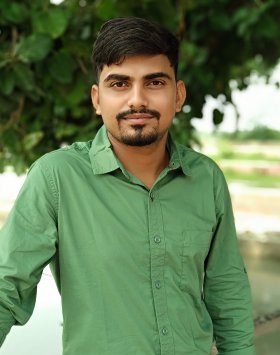Satyam

PhD Programme: Fluid Mechanics
Research group: LIFE – Laboratori d'Interacció Fluid-Estructura
Supervisors: Francisco Huera-Huarte & Albert Fabregat Sanjuan
Bio
Satyam holds a Bachelor degree in Mechanical engineering from Dr APJ Abdul Kalam Technical University, India, in 2017, where he developed a solar power plant of 1KW capacity for campus use as a part of his bachelor thesis. Subsequently, he worked as a Mechanical engineering trainee at Robotech Limited, where he worked on 3D modelling and analysis of different prototypes, including 3D printers, drones etc. He also worked for NITI Aayog (Government of India Initiative) on a research project, "Understanding the requirement of Modern Education system, merging technology and advance robotics curriculum in traditional school syllabus, and digitalize them under Digital India Movement". Carrying the passion of 3D modelling, he got a scholarship to study his masters in Mechanical Engineering Modelling at Budapest University of Technology and Economics, Budapest, Hungary and completed it in 2021. During his Masters, he worked as a Research Intern at Flowserve Corporation. As a Master thesis project, he worked on "CFD analysis of Back-flow occurring at centrifugal pump intakes in heavily choked flow conditions" funded by the Flowserve Corporation and BME. His research will help engineers to set up the intake configuration of Centrifugal pump CFD models correctly, as well as to analyze the backflow structure and hydraulic effects, which is difficult to investigate experimentally. With a strong research interest in CFD modelling and experimentation of turbomachines, he joined URV as a doctoral researcher within the Martí i Franquès COFUND Programme.
Project: New concepts applied to crossflow turbines
In the last years, we all have seen many new engineering concepts related to renewable energy, but in general, they end up being merely prototypes that never become mainstream and massively installed. Most of these prototypes are not based on deep physical understanding, but intuition and sometimes are simply marketing tools. The poor scalability and the lack of total understanding of the governing physical principles for these devices are the root causes for new concepts to be unsuccessful. Nowadays, the general feeling from the engineering point of view is that large axial machines such as horizontal axis wind turbines are the only option to extract current energy (marine or wind) efficiently. This study will provide a perfect opportunity to develop the fundamental basis for new groundbreaking technologies needed for clean fluid kinetic energy extraction from wind and marine currents, which in the future will be crucial according to our energy needs. We will carry out state of the art research related to marine or wind current energy harvesting using the concept of the Crossflow turbine - CFT (or vertical axis wind turbines - VAWT). Other technologies based on fluid-elastic instabilities will also be explored in parallel. We will work on passive and semi-active flow control methods for the blades of the CFT, ranging from the use of advanced materials for flow separation control, to shape morphing technologies for boundary layer control. Another essential objective of this study is to carry out a 3D computational flow analysis around the blades of the CFT considering the fluid surface interaction.
Outreach activities
- European Researchers' Night 2023: "H2O Heroes: Kids' Demonstration on Water Conservation, Pollution, and Treatment".



